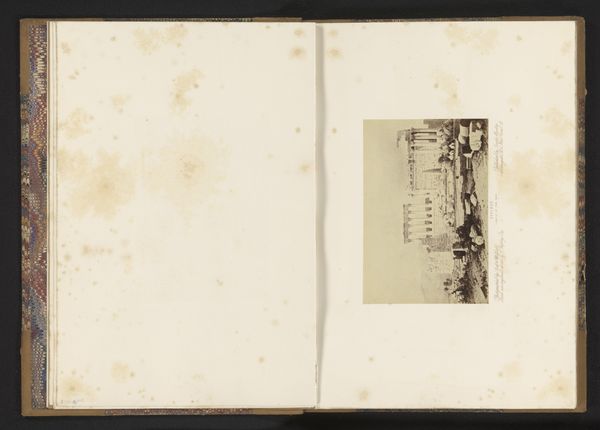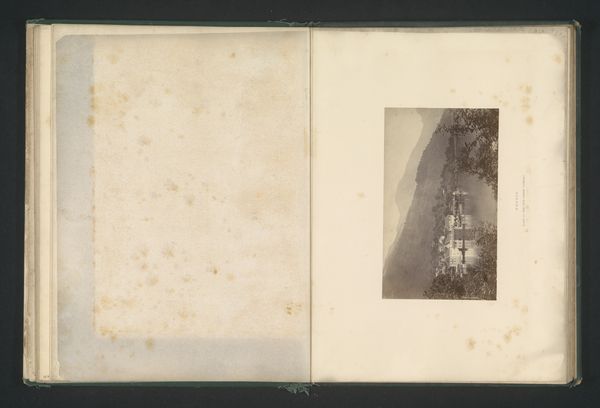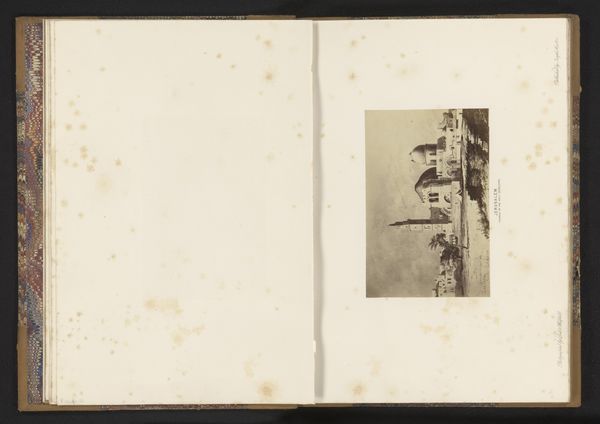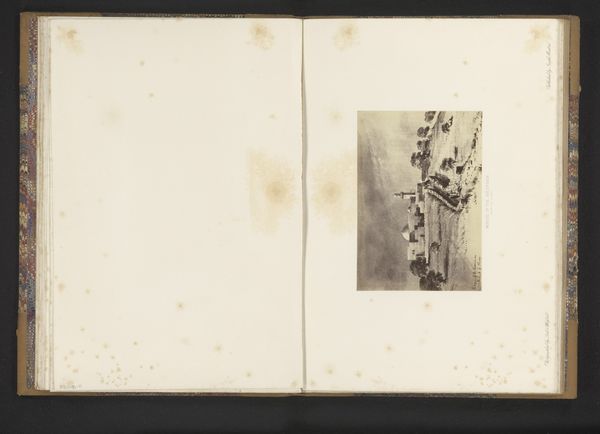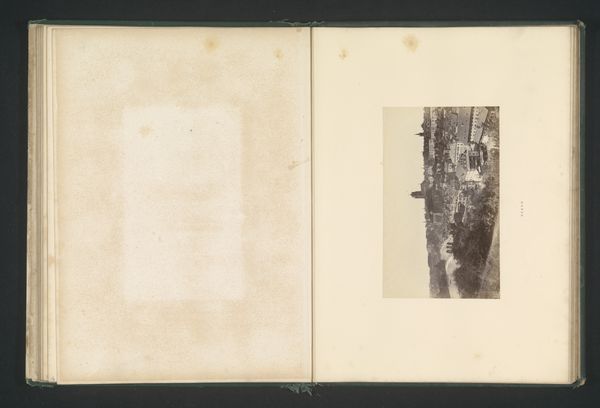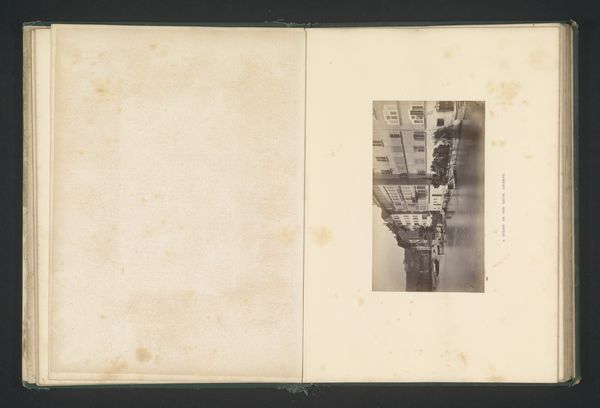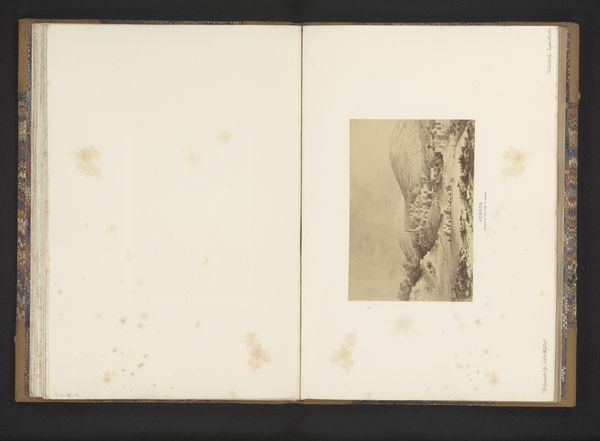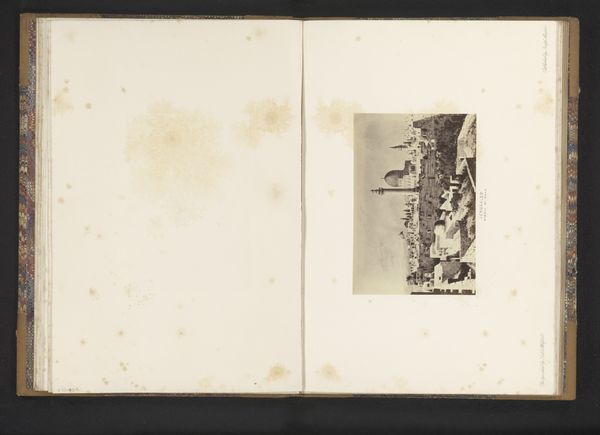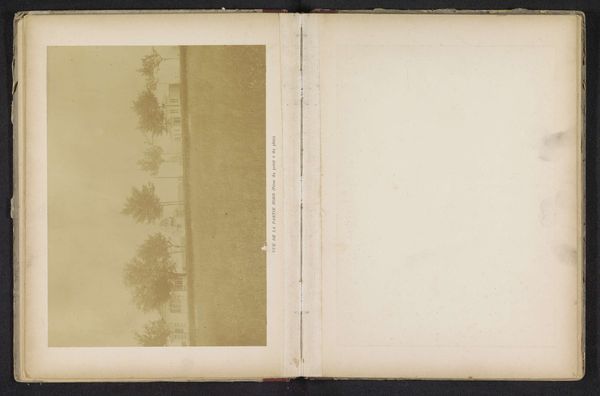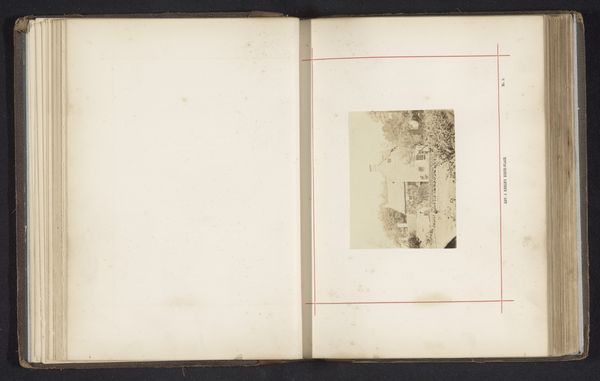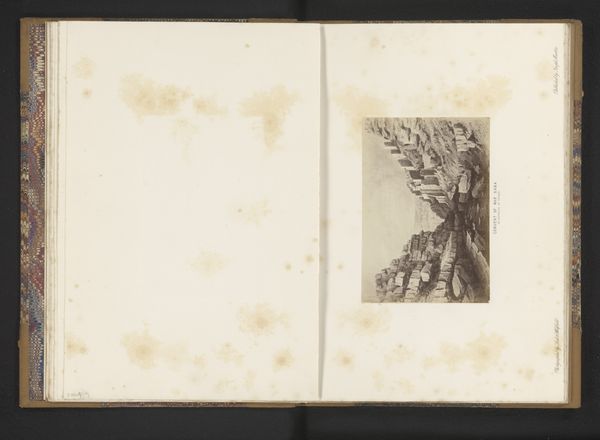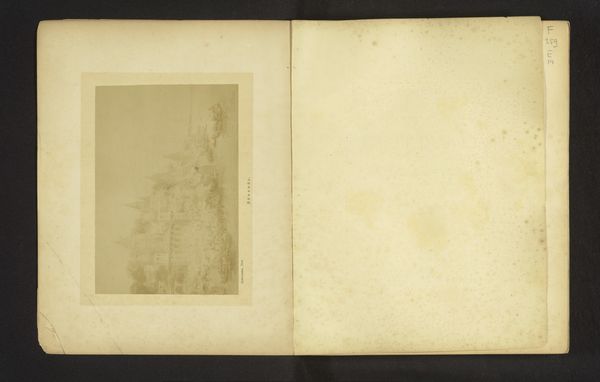
Fotoreproductie van het schilderij 'Mount Carmel, from the Bay of Caipha' door Conway Shipley before 1865
0:00
0:00
print, photography, albumen-print
# print
#
landscape
#
photography
#
albumen-print
Dimensions: height 110 mm, width 165 mm
Copyright: Rijks Museum: Open Domain
Editor: This is a photographic reproduction of a painting by Conway Shipley, titled "Mount Carmel, from the Bay of Caipha," dating back to before 1865. It's striking how the landscape feels both familiar and exotic at once, mostly captured in a muted monochrome palette. What can you tell me about the symbolism here? Curator: This landscape carries echoes that reverberate across centuries. Notice how the albumen print itself evokes a sense of faded memory, as if looking through a historical lens. Palm trees in this context often represent not only the exotic locales prized during the colonial era but also paradise and triumph. But look closer – Mount Carmel holds sacred importance for multiple religions; Judaism, Christianity, and Islam each recognize it as holy. So, I would ask you to consider: Is the artist trying to suggest the promise of spiritual transcendence or hint at the conflicts arising from competing claims to sacred space? Editor: That's fascinating. I hadn't considered the interplay of religious significance within a single landscape. Is there more to say about the choice to showcase this view in particular? Curator: Shipley's perspective, chosen deliberately, likely highlights the strategic and economic importance of the Bay of Caipha as a port. This image can thus be viewed as part of a visual tradition, staking a claim to the “Holy Land” for Western audiences, intertwining religious, political, and commercial interests. How do the twin palm trees flanking the central vista affect the viewer’s perspective? Do they perhaps symbolically guard this vista, granting access to the image? Editor: This really casts the image in a new light! Considering the layers of religious symbolism, colonial context, and visual composition... It’s definitely much richer than I initially perceived. Curator: Indeed! It serves as a reminder that even seemingly simple landscapes are interwoven with cultural and historical narratives. I wonder what future generations will discern from images we create today?
Comments
No comments
Be the first to comment and join the conversation on the ultimate creative platform.
